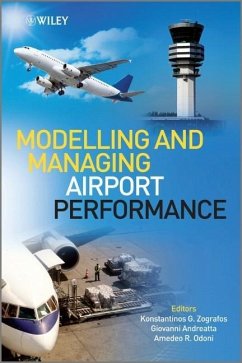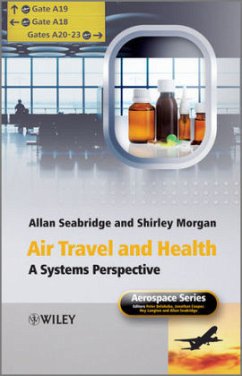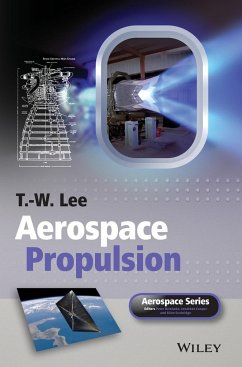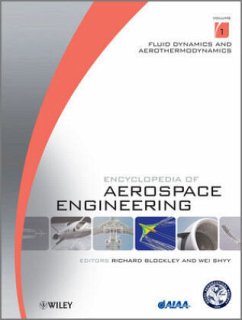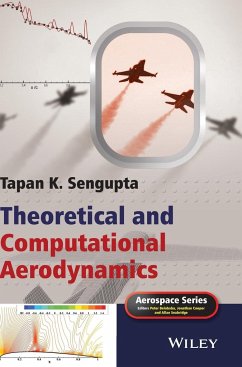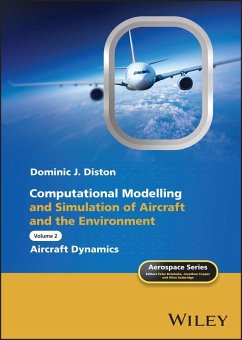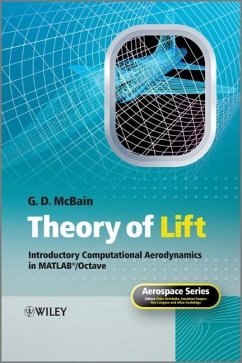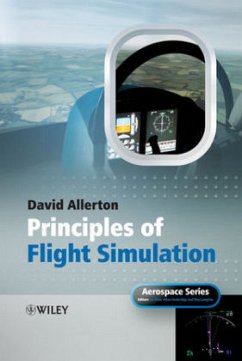
Uas Integration Into Civil Airspace
Policy, Regulations and Strategy
Herausgeber: Belobaba, Peter; Seabridge, Allan; Cooper, Jonathan
Versandkostenfrei!
Versandfertig in über 4 Wochen
88,99 €
inkl. MwSt.
Weitere Ausgaben:

PAYBACK Punkte
44 °P sammeln!
Explores current Unmanned Air Systems policies with a view to developing a common airspace access and integration strategy
* Discusses existing policies and regulations from nations around the world for flying Unmanned Aerial Vehicles (UAVs) in civil airspace.
* Examines the current status of technological developments and explores the technological potential in the years to come.
* Presents a comprehensive airspace integration strategy that balances the many conflicting interests in the UAS world, with due regard for safety, utility and affordability.
UAS Integration into Civil Airspace: Policy, Regulations and Strategy examines the current state of Unmanned Aerial Systems (UAS) airspace access and integration around the world, focusing on the efforts that have produced a regulatory response to the demand for access. This analysis provides the architecture for a common strategic and analytical thread that can serve as a template for the entire community, as well as for regulators and policymakers who must balance the needs and demands of UAS users with the general public's right to safe skies and privacy. An in-depth analysis of this scope and magnitude requires a thorough examination of the available technology; a comprehensive examination of all of the relevant policy and legal barriers; a look forward to where the technology is heading in the next 25-50 years; and a broad based perspective on what is currently feasible as envisioned by leaders in the field. An understanding of the market forces and business cases that are fuelling the development of the technology is also covered in a focus on the economics of the industry.
UAS Integration into Civil Airspace: Policy, Regulations and Strategy presents a strategy for airspace access and integration that will facilitate humanitarian, environmental, social and security uses of unmanned aircraft systems on a global scale, and will furthermore provide a common ground for discussion across international borders, from the local, rulemaking level to overarching diplomatic challenges.
* Discusses existing policies and regulations from nations around the world for flying Unmanned Aerial Vehicles (UAVs) in civil airspace.
* Examines the current status of technological developments and explores the technological potential in the years to come.
* Presents a comprehensive airspace integration strategy that balances the many conflicting interests in the UAS world, with due regard for safety, utility and affordability.
UAS Integration into Civil Airspace: Policy, Regulations and Strategy examines the current state of Unmanned Aerial Systems (UAS) airspace access and integration around the world, focusing on the efforts that have produced a regulatory response to the demand for access. This analysis provides the architecture for a common strategic and analytical thread that can serve as a template for the entire community, as well as for regulators and policymakers who must balance the needs and demands of UAS users with the general public's right to safe skies and privacy. An in-depth analysis of this scope and magnitude requires a thorough examination of the available technology; a comprehensive examination of all of the relevant policy and legal barriers; a look forward to where the technology is heading in the next 25-50 years; and a broad based perspective on what is currently feasible as envisioned by leaders in the field. An understanding of the market forces and business cases that are fuelling the development of the technology is also covered in a focus on the economics of the industry.
UAS Integration into Civil Airspace: Policy, Regulations and Strategy presents a strategy for airspace access and integration that will facilitate humanitarian, environmental, social and security uses of unmanned aircraft systems on a global scale, and will furthermore provide a common ground for discussion across international borders, from the local, rulemaking level to overarching diplomatic challenges.
UAS Integration into Civil Airspace: Policy, Regulations and Strategy
Douglas M Marshall, TrueNorth Consulting LLC., USA
Explores current Unmanned Air Systems policies with a view to developing a common airspace access and integration strategy
UAS Integration into Civil Airspace: Policy, Regulations and Strategy examines the current state of Unmanned Aerial Systems (UAS) airspace access and integration around the world, focusing on the efforts that have produced a regulatory response to the demand for access. This analysis provides the architecture for a common strategic and analytical thread that can serve as a template for the entire community, as well as for regulators and policymakers who must balance the needs and demands of UAS users with the general public's right to safe skies and privacy. An understanding of the market forces and business cases that are fuelling the development of the technology is also covered in a focus on the economics of the industry.
The book presents a strategy for airspace access and integration that will facilitate humanitarian, environmental, social and security uses of unmanned aircraft systems on a global scale.
Key features:
Discusses existing policies and regulations from nations around the world for flying Unmanned Aerial Vehicles (UAVs) in civil airspace.
Examines the current status of technological developments and explores the technological potential in the years to come.
Presents a comprehensive airspace integration strategy that balances the many conflicting interests in the UAS world, with due regard for safety, utility and affordability.
UAS Integration into Civil Airspace: Policy, Regulations and Strategy is essential reading for all professionals involved in UAS industry, as well as students in mechanical engineering and law.
Douglas M Marshall, TrueNorth Consulting LLC., USA
Explores current Unmanned Air Systems policies with a view to developing a common airspace access and integration strategy
UAS Integration into Civil Airspace: Policy, Regulations and Strategy examines the current state of Unmanned Aerial Systems (UAS) airspace access and integration around the world, focusing on the efforts that have produced a regulatory response to the demand for access. This analysis provides the architecture for a common strategic and analytical thread that can serve as a template for the entire community, as well as for regulators and policymakers who must balance the needs and demands of UAS users with the general public's right to safe skies and privacy. An understanding of the market forces and business cases that are fuelling the development of the technology is also covered in a focus on the economics of the industry.
The book presents a strategy for airspace access and integration that will facilitate humanitarian, environmental, social and security uses of unmanned aircraft systems on a global scale.
Key features:
Discusses existing policies and regulations from nations around the world for flying Unmanned Aerial Vehicles (UAVs) in civil airspace.
Examines the current status of technological developments and explores the technological potential in the years to come.
Presents a comprehensive airspace integration strategy that balances the many conflicting interests in the UAS world, with due regard for safety, utility and affordability.
UAS Integration into Civil Airspace: Policy, Regulations and Strategy is essential reading for all professionals involved in UAS industry, as well as students in mechanical engineering and law.




